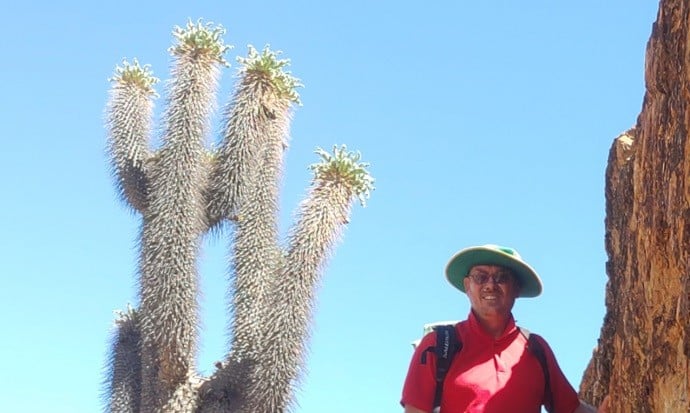
Christian Deschodt is a PhD student in the University of Pretoria’s (UP) Invertebrate Biosystematics and Conservation Group under the supervision of Professor Catherine Sole. He completed a master’s degree at Rhodes University and has been doing research at UP for 15 years, and since 2020 as a doctoral student.
Deschodt has expert knowledge of the southern African Scarabaeinae, more widely known as the dung beetle.
As to how his field of research contributes to the betterment of the world, he says: “Without dung beetles, within one year, the earth would literally be knee-deep in excreted matter. Dung beetles are of extreme ecological importance, and can be used as indicators of environmental health. I hope that my knowledge will help us to better understand the natural distribution of the Scarabaeinae so we can improve or concentrate our conservation efforts of new or established reserves and ecosystems where needed.”
In the recent past, Deschodt has authored or co-authored 41 peer-reviewed papers in local and international journals, as well as a peer-reviewed book, on taxonomy and ecology. He is part of the International Union for Conservation of Nature’s specialist group on dung beetles which assesses the southern African fauna for the IUCN’s Red List of Threatened Species.
Outside his academic work, Deschodt is a beekeeper and keeps a few head of Braunvieh cattle. He has an extensive collection of books on the natural history of Africa and southern Africa, some of which form part of the rare Africana book collection.
 Story
Story
Over the past two decades, field trips in search of dung beetles have taken University of Pretoria (UP) doctoral student Christian Deschodt across Southern Africa. But it was a well-trodden walk to fetch his kids from school, a mere 1,5km from his home near Hartbeespoort, that saw him stumble upon an entirely new species.
 Gallery
Gallery
In another paper, Deschodt described yet another new species. Onthophagus pragtig most likely only feeds on the innards of dead millipedes. It is one of 20 species that is part of a small group of dung beetles in the genus Onthophagus. All other species in this group are known to prefer feeding on the soft internal organs (or viscera) of dead millipedes.
 Infographic
Infographic
Dung beetles likely date back to Africa some 40 million years ago. They then spread across the world, except to Antarctica. Most dung beetles feed on dung. They lay their eggs in dung balls that are buried underground so that their developing larvae have enough food and easy access to it. Their digging helps to nourish and loosen the soil, and improves its water-holding capacity.
Copyright © University of Pretoria 2025. All rights reserved.
Get Social With Us
Download the UP Mobile App